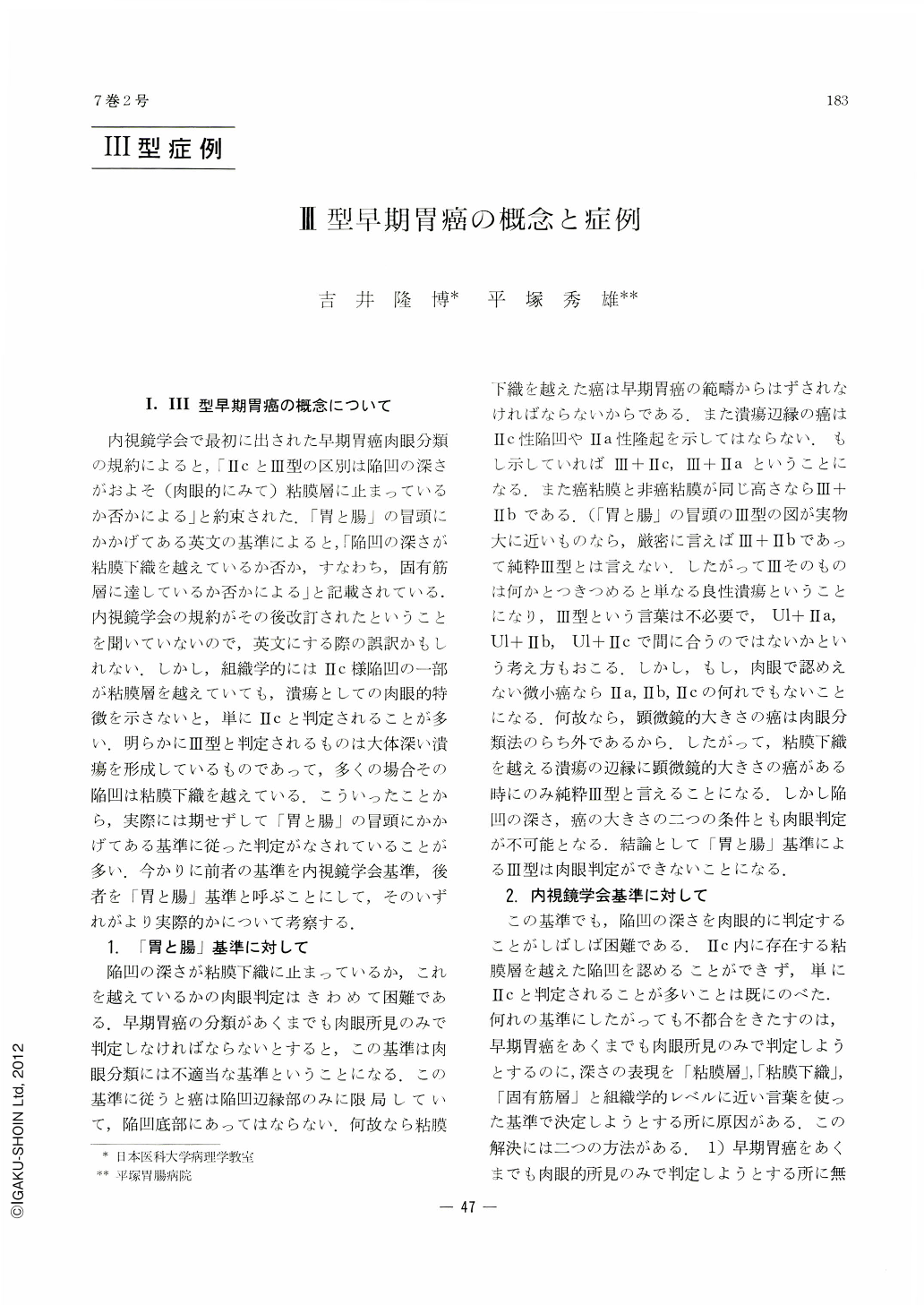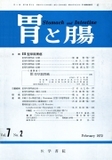Japanese
English
- 有料閲覧
- Abstract 文献概要
- 1ページ目 Look Inside
Ⅰ.Ⅲ型早期胃癌の概念について
内視鏡学会で最初に出された早期胃癌肉眼分類の規約によると,「ⅡcとⅢ型の区別は陥凹の深さがおよそ(肉眼的にみて)粘膜層に止まっているか否かによる」と約束された.「胃と腸」の冒頭にかかげてある英文の基準によると,「陥凹の深さが粘膜下織を越えているか否か,すなわち,固有筋層に達しているか否かによる」と記載されている.内視鏡学会の規約がその後改訂されたということを聞いていないので,英文にする際の誤訳かもしれない.しかし,組織学的にはⅡc様陥凹の一部が粘膜層を越えていても,潰瘍としての肉眼的特徴を示さないと,単にⅡcと判定されることが多い.明らかにⅢ型と判定されるものは大体深い潰瘍を形成しているものであって,多くの場合その陥凹は粘膜下織を越えている.こういったことから,実際には期せずして「胃と腸」の冒頭にかかげてある基準に従った判定がなされていることが多い.今かりに前者の基準を内視鏡学会基準,後者を「胃と腸」基準と呼ぶことにして,そのいずれがより実際的かについて考察する.
Ⅰ. Concept of type Ⅲ early gastric cancer
According to the agreement on the macroscopic classification of early gastric cancer as was first presented at the Japan Gastrointestinal Endoscopy Society, the difference between Ⅱc and Ⅲ depended on whether or not the depth of excavation was limited within the mucosal layer. On the other hand, the criteria of type Ⅲ printed in English at the beginning of this magazine show that its distinction is based on whether or not the depth of depression reaches beyond the submucosa. The author, for one, prefers the former criteria. At the same time, the criteria of early gastric cancer should be free from histological terms such as the mucosa or submucosa. Accordingly, type Ⅱc should better be defined as the depressed type that has macroscopically erosive depression; and type Ⅲ, as the depressed type that has ulcerous depression.
According to the current criteria of type Ⅲ, cancer in it must be localized solely on the margins of depression and its size be almost of microscopic dimensions, so that the type Ⅲ whose depression reaches beyond the submucosal layer is macroscopically very hard to diagnose; in fact, it is hardly possible. Therefore, its criteria should be loosened slightly to make more room for macroscopic diagnosis, embodying all depressed types of early gastric cancer as long as their marginal cancer lesions, even when grossly to be recognized, are such that they do not present and finding either of Ⅱa or Ⅱc. For determination of type Ⅲ attention should be paid principally to its gross findings, but there must also be room for possible alteration of diagnosis depending on the histological investigation.
Ⅱ. Cases of type Ⅲ early gastic cancer
Three cases have been demonstrated here. The first is compatible with the type Ⅲ in its most strict definition, its depression reaching beyond the submucosa and its marginal localized cancer having only microscopic dimensions; the second shows the same depth of cancer invasion but its marginal cancer area is slightly larger, a type Ⅲ according to slightly enlarged criteria, and the third also type Ⅲ in a broader sense of its definition.

Copyright © 1972, Igaku-Shoin Ltd. All rights reserved.


